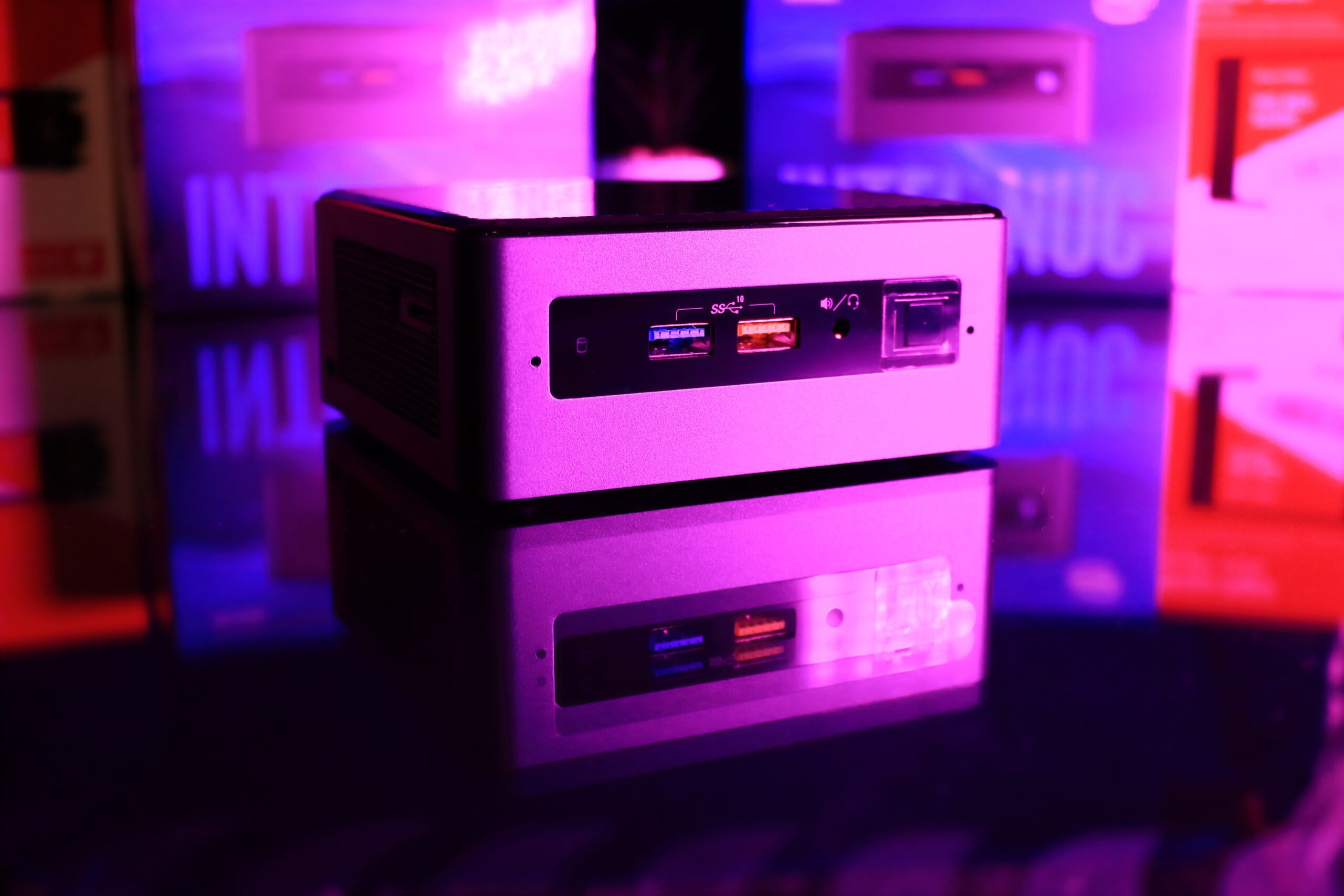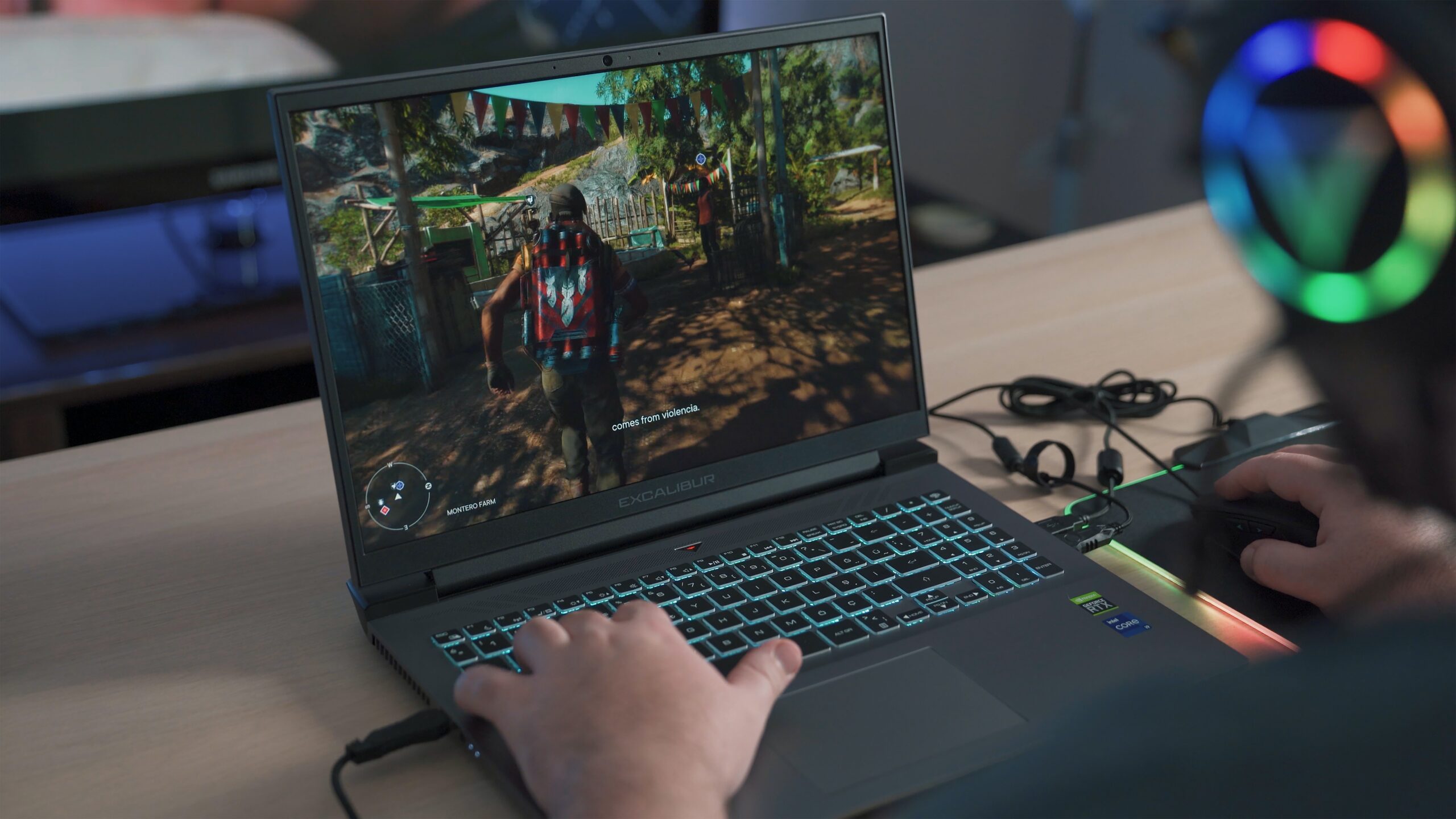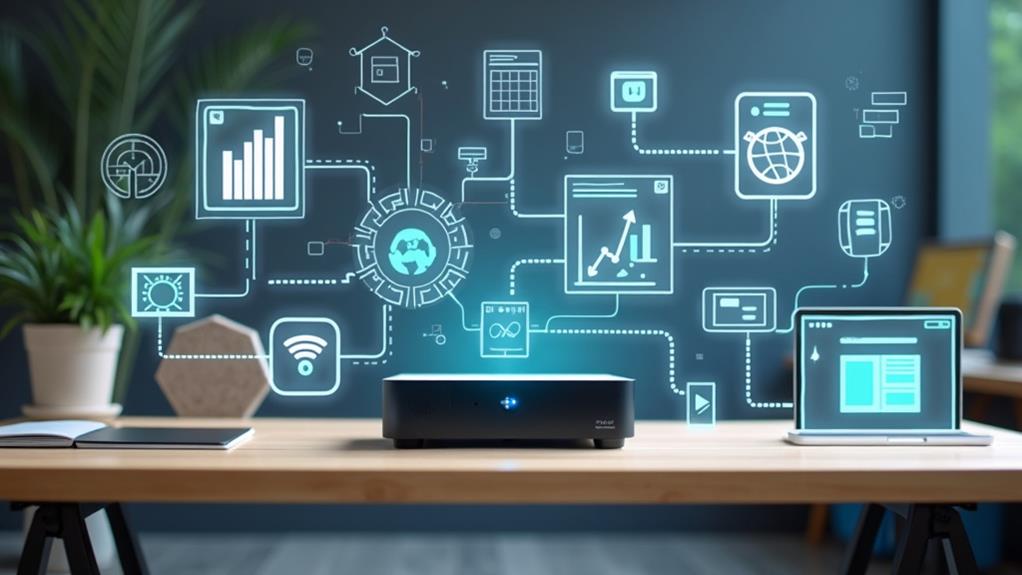



Are you considering purchasing a mini PC but unsure about how much RAM you actually need? In this article, we’ll provide you with a clear answer to this crucial question. Many factors come into play when determining the ideal amount of RAM for a mini PC, such as your usage requirements and budget. By the end of this article, you’ll have a better understanding of how much RAM is necessary to ensure a smooth and efficient computing experience on a mini PC. So, let’s get started and find out exactly how much RAM you need for your Mini PC!

Understanding RAM
RAM, or Random Access Memory, is a crucial component of a computer’s hardware. It is a form of volatile memory that stores data and instructions required for the computer’s current operations. Unlike permanent storage devices such as hard drives or solid-state drives, RAM is temporary and is cleared when the computer is powered off.
What is RAM?
RAM is a type of computer memory that is responsible for temporarily storing and accessing data that the computer’s processor needs to operate. It allows for fast and efficient data retrieval, making it an essential component for overall system performance. Think of RAM as the workbench or workspace where the computer’s processor can quickly fetch and process data.
Role of RAM in a computer
RAM acts as a bridge between the computer’s processor and its storage devices. When you open a program or run an application, the necessary data is loaded from the storage device into RAM. This data remains in RAM throughout the duration of the program or application’s execution, allowing the processor to quickly access and manipulate it. Without sufficient RAM, the computer would need to rely heavily on slower storage devices, resulting in slower system performance.
Difference between RAM and other types of memory storage
While RAM and permanent storage devices like hard drives or solid-state drives serve different purposes, they are often confused. One key difference between them is their volatility. RAM is a form of volatile memory, meaning its contents are lost when the computer is powered off. On the other hand, permanent storage devices retain data even when the power is turned off, making them suitable for long-term data storage. Additionally, RAM provides faster access to data than permanent storage devices, enabling the computer to perform tasks more efficiently.
Basics of Mini PCs
Mini PCs, also known as small form factor computers, are compact, space-saving devices designed to deliver sufficient computing power for everyday tasks while occupying minimal desk space. They typically have a small footprint and offer a range of features and benefits that make them an attractive option for various users.
What is a Mini PC?
A Mini PC is a small-sized desktop computer that combines the essential components of a traditional computer into a compact form factor. Despite their compact size, Mini PCs are capable of performing most common computing tasks. They often come with built-in Wi-Fi, multiple USB ports, and audio connections, making them versatile and easy to connect with peripheral devices.
Features and benefits of Mini PCs
Mini PCs offer several advantages over traditional desktop computers. Firstly, their small size makes them highly portable, allowing you to easily move them between different locations or use them in limited spaces such as dorm rooms or small office desks. Additionally, Mini PCs are energy-efficient, consuming less power compared to larger desktop computers. This not only helps reduce electricity bills but also contributes to a greener environment. Moreover, Mini PCs are often more affordable than traditional desktop computers, making them a cost-effective choice for budget-conscious users.
Common uses of Mini PCs
Mini PCs are suitable for a wide range of applications. They can serve as media playback devices, allowing you to stream movies, play music, or display photos on your TV. Mini PCs are also ideal for basic office tasks like word processing, spreadsheet management, and web browsing. Furthermore, they can be used as home entertainment centers, gaming consoles, or even as dedicated servers for specific purposes. The versatility of Mini PCs makes them a popular choice for various users, including home users, students, and small businesses.
Factors affecting RAM requirements
When considering the amount of RAM you need for your Mini PC, several factors come into play. The operating system, type of applications you frequently use, and your multitasking habits all influence the RAM requirements. Additionally, it is crucial to consider your current and future needs to ensure that your Mini PC can handle the tasks you require.
The operating system
Different operating systems have different minimum RAM requirements. If you plan to use Windows, for example, the minimum recommended RAM is typically around 4GB for a 64-bit version. However, it is important to note that the more RAM you have, the better your system will perform, especially when running resource-intensive applications or multitasking.
Type of applications
The RAM requirements for applications vary based on their complexity and resource demands. If you primarily use basic office applications or web browsing software, you may be able to get by with less RAM. Conversely, if you use resource-demanding applications like video editing software or virtual machines, you will likely require more RAM to ensure smooth performance.
Multitasking habits
If you frequently find yourself juggling multiple applications simultaneously, such as running a web browser with multiple tabs, streaming music, and managing documents, you will benefit from having additional RAM. More RAM allows the computer to handle multiple tasks efficiently, reducing the likelihood of system slowdowns or freezing.
Current and future needs
Consider your current computing requirements and future needs. If you are a casual user who primarily uses their Mini PC for email, web browsing, and basic office tasks, 4GB to 8GB of RAM may suffice. However, if you foresee needing to handle more demanding tasks or running intensive applications down the line, opting for a higher RAM capacity, such as 16GB or 32GB, may provide the necessary headroom for future growth.
The relationship between RAM and performance
RAM plays a crucial role in determining the overall performance of your Mini PC. Insufficient RAM can lead to system slowdowns and reduced multitasking efficiency, while increased RAM can significantly improve performance, particularly when running resource-intensive applications or engaging in heavy multitasking.
How RAM affects general performance
RAM directly impacts the speed and responsiveness of your computer. When your Mini PC has more RAM, it can store larger amounts of frequently accessed data. As a result, the computer can work more efficiently, reducing the time it takes for applications to load and improving overall system responsiveness. Conversely, if your Mini PC has insufficient RAM, it may struggle to keep up with demanding tasks, leading to slowdowns and sluggish performance.
How increased RAM improves multitasking efficiency
If you frequently switch between multiple applications or run several resource-intensive tasks simultaneously, having more RAM allows your Mini PC to handle the increased workload efficiently. With additional RAM, the computer can allocate more memory to different tasks, reducing the need for constant data swapping between RAM and the storage device. This results in smoother multitasking and faster performance.
How lack of sufficient RAM impacts system speed
Insufficient RAM can negatively impact your Mini PC’s speed and performance. When your computer runs out of available RAM, it compensates by using a portion of the hard drive or solid-state drive as virtual memory. While virtual memory can help prevent crashes or system freezes, it is significantly slower than accessing data directly from RAM. This reliance on virtual memory can cause noticeable slowdowns, especially when running memory-intensive applications or multitasking extensively.

Specific RAM requirements for different tasks
The amount of RAM required for different tasks can vary significantly based on the complexity and resource demands of the activities involved. Here are some general guidelines for RAM requirements in various common tasks:
RAM for basic tasks
For basic tasks like web browsing, email, and word processing, a Mini PC with 4GB of RAM should be sufficient. These activities typically do not require a substantial amount of memory, allowing your computer to handle them comfortably. However, keep in mind that if you plan to have multiple applications open simultaneously, more RAM may be beneficial for smoother multitasking.
RAM for office tasks
If you frequently work with office applications like spreadsheets, presentations, and databases, it is recommended to have at least 8GB of RAM. These applications can consume more memory, especially when working with larger files or datasets. Having additional RAM allows for faster data processing and reduces the likelihood of slowdowns when working on complex projects.
RAM for multimedia tasks
Tasks involving multimedia, such as photo editing, video rendering, or audio production, typically require more RAM due to the large file sizes and resource-intensive nature of these activities. To ensure smooth performance, it is advisable to have a Mini PC with at least 16GB of RAM. This allows for faster data access and manipulation, reducing the time required for rendering or editing tasks.
RAM for gaming
Gaming often involves running graphically demanding applications that rely heavily on RAM. The RAM requirements for gaming depend on the specific game you intend to play and its recommended specifications. As a general guideline, a Mini PC with 8GB or more of RAM is recommended for casual gaming, while more resource-intensive games may benefit from 16GB or higher RAM capacities.
RAM for software development
Software development often involves working with large codebases and resource-intensive development environments. To ensure smooth compilation, debugging, and testing processes, a Mini PC with 16GB or more of RAM is recommended for software developers. Additional RAM allows for faster code execution, reduces lag when working with complex projects, and enables more efficient virtual machine usage for testing purposes.
Understanding the various types of RAM
When choosing RAM for your Mini PC, it is essential to be familiar with the various types available in the market. Two common types are DDR3 and DDR4, while SODIMM and DIMM are the standard form factors for laptop and desktop RAM modules, respectively.
DDR3 vs DDR4 RAM
DDR3 and DDR4 are different generations of RAM with varying performance characteristics. DDR4 RAM offers higher data transfer rates and improved power efficiency compared to DDR3 RAM. If your Mini PC supports DDR4 RAM, it is generally recommended to opt for DDR4 modules for better system performance. However, if your Mini PC only supports DDR3 RAM, it is still a viable option, especially if you have budget constraints.
SODIMM vs DIMM RAM
SODIMM and DIMM refer to the form factors of RAM modules. SODIMM, or Small Outline Dual In-line Memory Module, is commonly used in laptops and smaller form factor Mini PCs due to its compact size. DIMM, or Dual In-line Memory Module, is the standard form factor used in desktop computers and larger Mini PCs. When choosing RAM for your Mini PC, ensure that the module matches the form factor supported by your computer.
RAM speed and its impact on performance
Apart from the generation and form factor, RAM speed also plays a role in overall system performance. The speed of RAM modules is measured in megahertz (MHz) and represents how quickly the RAM can transfer data. Higher RAM speeds generally translate to better performance, especially in tasks that involve large file transfers or run resource-intensive applications. However, it is important to note that the performance gain from increased RAM speeds might not be noticeable in everyday computing tasks. Consider your specific needs and budget when selecting the appropriate RAM speed for your Mini PC.

Choosing the right amount of RAM for your Mini PC
Selecting the suitable amount of RAM for your Mini PC depends on your specific needs and requirements. Here are some factors to consider when choosing the RAM capacity:
Selecting the suitable RAM size
Consider the tasks you primarily perform on your Mini PC and the recommendations for those activities outlined earlier in this article. Start by determining the minimum amount of RAM required for your specific needs. If your budget permits, consider increasing the RAM capacity to allow for smoother multitasking and future growth. Remember that more RAM often translates to better performance, especially when running resource-intensive applications or engaging in heavy multitasking.
Considering upgradeability
Evaluate the upgradeability options of your Mini PC. Some Mini PCs offer the ability to add or replace RAM modules easily, while others may have limited or non-upgradeable RAM. If you anticipate future needs that may require more RAM, opt for a Mini PC that allows for RAM upgrades to ensure flexibility.
Balancing cost and performance
While having more RAM generally improves performance, it is essential to strike a balance between your budget and the performance gains obtained from additional RAM. Consider the cost difference between different RAM capacities and evaluate whether the potential performance improvement justifies the additional cost. Remember that investing in more RAM should align with your specific computing needs to avoid overspending on unnecessary resources.
Examples of Mini PCs and their RAM capacities
To assist you in choosing a Mini PC with the appropriate RAM capacity, here are reviews of Mini PCs available in different RAM configurations:
Review of Mini PCs with 4GB RAM
Mini PC A: This Mini PC comes with 4GB of RAM, making it suitable for basic tasks such as web browsing, email, and word processing. It offers sufficient performance for everyday computing needs, but its RAM capacity may limit its capabilities for resource-intensive applications or multitasking extensively.
Mini PC B: Another Mini PC with 4GB of RAM, this model offers similar performance to Mini PC A. It is a cost-efficient option for general use, but users requiring more memory for multitasking or resource-demanding applications may need to consider a higher RAM capacity.
Review of Mini PCs with 8GB RAM
Mini PC C: This Mini PC features 8GB of RAM and provides improved performance compared to the 4GB variants. It can handle basic tasks efficiently and also supports moderate multitasking and running applications with slightly higher resource demands.
Mini PC D: Equipped with 8GB of RAM, this Mini PC offers similar performance to Mini PC C. It is suitable for users who require more memory for multitasking or running applications that may demand additional resources.
Review of Mini PCs with 16GB RAM
Mini PC E: This Mini PC comes with 16GB of RAM and is well-suited for resource-intensive tasks like multimedia editing or running multiple virtual machines. It offers a significant performance boost compared to lower RAM capacity Mini PCs and supports smoother multitasking.
Mini PC F: With 16GB of RAM, this Mini PC is designed for users who require high-performance computing. It can handle demanding applications efficiently and offers headroom for future growth and expanding computing needs.
Review of Mini PCs with 32GB RAM
Mini PC G: This Mini PC is equipped with 32GB of RAM, making it suitable for power users and professionals who require extensive computing power. It can handle heavy multitasking, resource-intensive applications, and complex software development tasks with ease.
Mini PC H: Designed for users with demanding computing needs, this Mini PC offers 32GB of RAM. Its high RAM capacity enables efficient execution of memory-intensive tasks such as video editing, large-scale data analysis, or running multiple virtual machines simultaneously.
Installing and upgrading RAM on a Mini PC
If you find the need to install or upgrade the RAM on your Mini PC, following proper procedures and precautions is essential. Here is a step-by-step guide to assist you:
Precautions before installing
- Turn off and unplug your Mini PC from the power source before starting the installation or upgrade process.
- Ground yourself to prevent any static electricity discharge, which can damage sensitive computer components.
- Refer to your Mini PC’s user manual or manufacturer’s guidelines to ensure compatibility and proper installation.
Step-by-step guide on installation
- Identify the RAM slots on your Mini PC’s motherboard. Depending on the Mini PC model, there might be one or more slots available.
- Carefully remove any existing RAM modules, if applicable. Gently push the retaining clips located on each end of the RAM module, allowing it to pop up. Remove the module from the slot.
- Align the notch on your new RAM module with the slot on the motherboard. Insert it carefully at an angle and press it firmly until it clicks into place. Ensure that both retaining clips on the slot lock the module securely.
- If you are installing multiple RAM modules, repeat the process for each slot.
- Once all the RAM modules are installed, close the Mini PC’s case or panel, ensuring that it is securely fastened.
Verifying the new RAM
Once you have installed or upgraded the RAM on your Mini PC, it is crucial to verify that it has been recognized correctly. Here’s how to verify the new RAM:
- Power on your Mini PC and let it boot into the operating system.
- Open the Task Manager (press Ctrl + Shift + Esc) on Windows or the Activity Monitor on macOS to check the recognized amount of RAM.
- Ensure that the system recognizes the new RAM capacity and that it matches the installed RAM modules’ specifications.
If the system does not recognize the new RAM or the recognized capacity does not match the installed modules, double-check the installation and ensure proper seating of the RAM modules. If the issue persists, consult the Mini PC’s user manual or contact the manufacturer for further assistance.
Common Questions About Mini PC RAM
As you explore the world of Mini PCs and RAM, you may have some common questions. Here are answers to several frequently asked questions regarding Mini PC RAM:
Can more RAM speed up a Mini PC?
Yes, upgrading your Mini PC’s RAM can significantly improve its performance and speed. More RAM allows your computer to handle a larger amount of data without relying on slower storage devices, leading to smoother multitasking, faster application loading times, and reduced system slowdowns.
Is it possible to have too much RAM?
While having more RAM is generally beneficial for system performance, there is a point of diminishing returns. If you have an excessive amount of RAM that exceeds your computing needs, you may end up wasting resources and overspending. It is essential to strike a balance between your Mini PC’s RAM capacity and your specific requirements to avoid unnecessary expenses.
What happens if a Mini PC doesn’t have enough RAM?
Insufficient RAM can lead to decreased system performance and slower multitasking speeds. When your Mini PC lacks sufficient RAM, it compensates by relying on slower storage devices, resulting in increased load times for applications, potential system freezes, and overall sluggishness. Upgrading the RAM can alleviate these issues and improve the Mini PC’s performance.
Disclosure: As an Amazon Associate, I earn from qualifying purchases.





